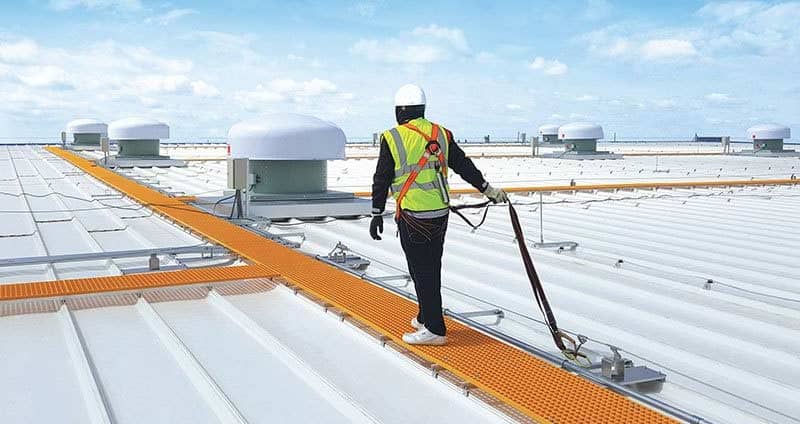
Fiberglass Profiles in the Construction Industry
Fiberglass profiles are structural components made of fiberglass reinforced plastic (FRP), a composite material that combines the strength and durability of fiberglass with the versatility and low weight of plastic. Fiberglass profiles can be used in various applications in the construction industry, such as:
Building Facades
Fiberglass profiles can be used to create attractive and innovative building facades, such as curtain walls, cladding panels, louvers, and sunshades. Fiberglass profiles offer advantages such as high resistance to corrosion, weathering, and UV rays, as well as thermal and acoustic insulation. Fiberglass profiles can also be customized in different shapes, colors, and finishes to suit the architectural design and aesthetic requirements of the building.
Structural Frames
Fiberglass profiles can be used to construct structural frames for buildings, bridges, roofs, and other structures. Fiberglass profiles have high strength-to-weight ratio, which means they can support heavy loads with less material and weight. Fiberglass profiles also have high stiffness and dimensional stability, which means they can withstand deformation and stress without cracking or warping. Fiberglass profiles can also be prefabricated and assembled on site, which reduces the construction time and cost.
Reinforcement and Repair
Fiberglass profiles can be used to reinforce and repair existing structures that are damaged or deteriorated due to aging, corrosion, or natural disasters. Fiberglass profiles can be bonded to the surface of the structure or embedded into the concrete matrix to enhance the strength and durability of the structure. Fiberglass profiles can also be used to replace steel bars or wires in concrete structures, which reduces the risk of corrosion and improves the fire resistance of the structure.
Types of Fiberglass Profiles
Fiberglass profiles can be manufactured by different methods, such as pultrusion, pullwinding, or centrifugal casting. Depending on the method and the fiber reinforcement, fiberglass profiles can have different properties and shapes. Some common types of fiberglass profiles are:
Round fiberglass profiles: These are cylindrical rods or tubes that can be used as poles, pipes, or spacers.
Halfround fiberglass profiles: These are semi-circular rods that can be used as rails, bumpers, or edgings.
Fiberglass dogbones: These are rectangular rods with rounded corners that can be used as electrical insulators or connectors.
Fiberglass corner section profiles: These are L-shaped rods that can be used as brackets, supports, or frames.
Fiberglass angle profiles: These are V-shaped rods that can be used as corners, joints, or reinforcements.
Fiberglass C section profiles: These are U-shaped rods that can be used as channels, guides, or tracks.
Fiberglass H section profiles: These are I-shaped rods that can be used as beams, girders, or columns.
Fiberglass square tubes: These are hollow square rods that can be used as frames, boxes, or ducts.
Fiberglass flats: These are flat strips that can be used as plates, bars, or covers.
Fiberglass sailbattens: These are flexible strips that can be used as stiffeners for sails or tents.
Fiberglass handrail systems: These are modular components that can be used to create handrails or guardrails.
Conclusion
Fiberglass profiles are versatile and beneficial materials for the construction industry. They can be used to create attractive and innovative building facades, construct strong and lightweight structural frames, reinforce and repair existing structures, and provide various shapes and sizes for different purposes. Fiberglass profiles offer advantages such as high resistance to corrosion, weathering, and UV rays, thermal and acoustic insulation, customization, prefabrication, and cost-effectiveness. Fiberglass profiles are therefore a promising alternative to traditional materials such as steel, wood, and concrete in the construction industry.
 +86 15303735673
+86 15303735673 Jessica@frpzs.com
Jessica@frpzs.com
 Technical Data
Technical Data











